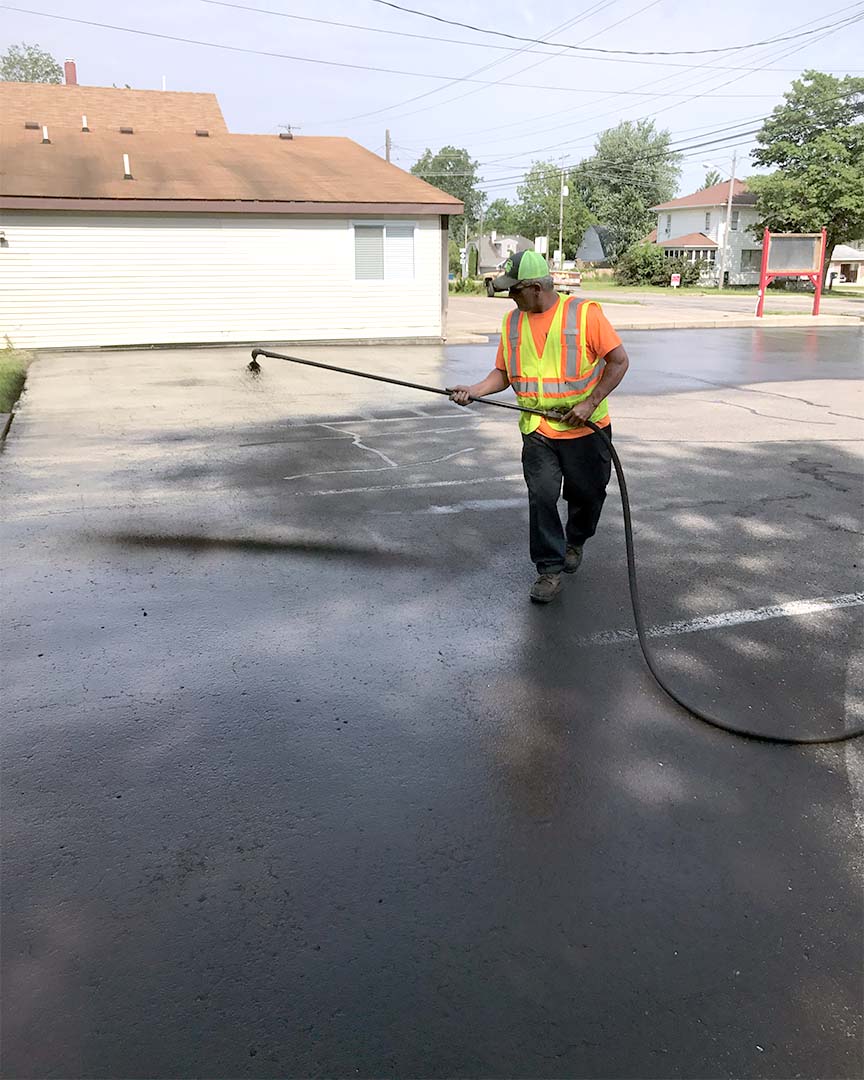Rejuvenate Your Residential Property with Regrading and Asphalt Sealing Techniques
Wiki Article
Hot Mix Asphalt: A Lasting Solution for Sidewalk
Warm Mix Asphalt (HMA) has actually arised as a leading sustainable choice for sidewalk remedies, supplying a myriad of ingenious modern technologies and environmental benefits. As the demand for green construction methods grows, checking out the subtleties of HMA's sustainability can give useful understandings right into the future of pavement remedies.Environmental Advantages of Warm Mix Asphalt

Moreover, Hot Mix Asphalt aids to reduce metropolitan heat island impacts. Its dark color soaks up sunshine, decreasing the quantity of warmth reflected back right into the ambience contrasted to lighter-colored sidewalks. This can reduce ambient temperature levels in urban areas, lowering the demand for a/c and eventually reducing power intake.
On top of that, Warm Mix Asphalt adds to enhanced stormwater administration. Its porous nature enables water to penetrate the sidewalk and charge groundwater products, lowering runoff and the risk of flooding. These ecological benefits make Hot Mix Asphalt a lasting choice for paving roads and highways.
Power Performance in HMA Production
Is energy efficiency an important aspect in the manufacturing of Warm Mix Asphalt (HMA)? Power plays a considerable duty in the manufacturing of HMA, impacting both cost and ecological sustainability. One vital facet of energy efficiency in HMA manufacturing is the usage of cozy mix asphalt (WMA) technologies.Furthermore, developments in plant modern technologies have led to more energy-efficient HMA production procedures. By optimizing energy usage in HMA manufacturing, the industry can reduce its carbon footprint while preserving high-grade sidewalk products.
Recyclability of Warm Mix Asphalt
The recyclability of Warm Mix Asphalt (HMA) is a pivotal element of its sustainability and long-term ecological effect. HMA is one of one of the most recycled materials in the USA, with over 100 million loads of recovered asphalt pavement (RAP) being reused annually in brand-new pavement building and construction. Recycling HMA uses numerous ecological advantages, such as lowering the requirement for virgin materials, reducing power usage during production, and decreasing the quantity of waste sent out to land fills.The procedure of reusing HMA entails grating the existing pavement, squashing it into smaller sized commercial parking lot paving pieces, and blending it with new aggregate and asphalt binder to produce a recycled mix. In general, the recyclability of HMA plays a significant duty in advertising lasting techniques within the pavement sector.

Long-Term Performance of HMA
Asphalt sidewalks show toughness and durability over an extensive period, mirroring the lasting performance of Warm Mix Asphalt (HMA) Additionally, innovations in HMA technology, such as the usage of polymer-modified binders and warm mix asphalt, have additionally enhanced the durability and long life of HMA pavements. By focusing on top quality building and construction and upkeep techniques, HMA continues to verify itself as a lasting and economical remedy for resilient sidewalk infrastructure.
HMA: Resilience and Sustainability
Demonstrating both sturdiness and sustainability, Warm Mix Asphalt (HMA) has actually come to be a cornerstone in the building of lasting sidewalk facilities - regrading. HMA's toughness comes from its capacity to withstand heavy tons, extreme climate problems, and high traffic volumes, making it a reliable option for highways, freeways, and flight terminal runways. The composition of HMA, which normally consists of aggregates, binder, and filler, plays a crucial duty in boosting its durability and resistance to tear and use
Additionally, HMA's sustainability depends on its recyclability and energy-efficient production procedure. The capability to recycle recovered asphalt pavement (RAP) in new HMA mixtures lowers the need for virgin products and lessens the ecological influence of pavement construction and maintenance. Additionally, the power efficiency of creating HMA hinges on its reduced blending temperatures compared to other pavement products, leading to lowered power usage and greenhouse gas emissions.
Verdict
In final thought, warm mix asphalt (HMA) supplies a lasting remedy for sidewalk with its eco friendly attributes. HMA's recyclability, energy efficiency in manufacturing, and long-lasting sturdiness make it an eco-friendly selection for roadway building.
HMA is one of the most recycled products in the United States, with over 100 million lots of redeemed asphalt sidewalk (RAP) being recycled each year in new pavement building.The procedure of reusing HMA entails crushing the existing sidewalk, squashing it right into smaller pieces, and mixing it with brand-new accumulation and asphalt binder to produce a recycled mix.Asphalt sidewalks demonstrate longevity and durability over a prolonged period, mirroring the long-term performance of Warm Mix Asphalt (HMA) In addition, developments in HMA technology, such as the use of polymer-modified binders and cozy mix asphalt, have even more enhanced the toughness and longevity of HMA sidewalks. The ability to reuse reclaimed asphalt sidewalk (RAP) in brand-new HMA mixtures minimizes the demand for virgin materials and lessens the ecological influence of pavement building and construction and maintenance.
Report this wiki page